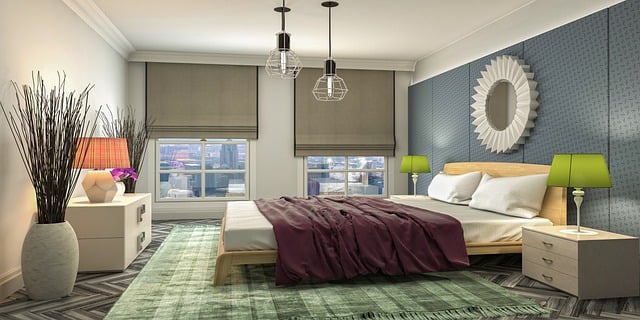Furniture 3D modeling and parametric modeling are revolutionary tools in interior design, offering precise digital models for efficient space planning. This technology automates complex designs, enables rapid customization, and facilitates collaboration. By streamlining workflows, reducing errors, and allowing seamless adjustments to dimensions, materials, and layouts, these methods revolutionize the way designers create adaptable, scalable, and aesthetically pleasing spaces.
Discover the transformative power of parametric modeling in interior design, enabling adaptable and scalable solutions. This innovative approach leverages furniture 3D modeling to streamline workflows, enhance creativity, and optimize space planning. By exploring the benefits of parametric design, you’ll learn how to create dynamic spaces that accommodate changing needs and preferences. From efficient implementation to seamless scaling, this article delves into the strategies that make parametric modeling a game-changer in modern interior design, particularly for furniture 3D modeling applications.
Understanding Parametric Modeling for Interior Design
Parametric modeling is a revolutionary approach in interior design, transforming how professionals create and visualize spaces. It involves using advanced software to develop digital models based on mathematical parameters. This method allows designers to quickly generate customized furniture 3D modeling and interior arrangements, ensuring adaptability and scalability in various projects.
By defining relationships between geometric elements, parametric modeling enables the automatic generation of complex designs. Designers can adjust parameters like dimensions, proportions, and material choices, leading to a wide range of tailored solutions. This technology streamlines the design process, making it easier to experiment with different concepts and iterate on ideas, ultimately enhancing creativity and efficiency in interior design projects.
Advantages of Using Furniture 3D Modeling
Furniture 3D modeling offers a multitude of advantages for interior design and planning. One of its key strengths lies in the ability to create precise, digital representations of furniture pieces, enabling designers and clients to visualize and interact with spaces virtually. This technology streamlines the design process by allowing for quick modifications, ensuring that every detail, from dimensions to material choices, can be accurately adjusted before production begins.
Additionally, furniture 3D modeling facilitates scalability and adaptability in interior solutions. Digital models provide a flexible framework, enabling designers to easily reconfigure layouts, rearrange furniture, and explore different design scenarios without the constraints of physical prototypes. This efficiency not only saves time and resources but also empowers clients to make informed decisions, fostering collaboration and enhancing overall project satisfaction.
Creating Adaptable and Scalable Spaces with Parametrics
Creating adaptable and scalable spaces has become a key focus in modern interior design, driven by the need for versatile environments that can accommodate changing needs. Parametric modeling offers a powerful tool to achieve this, enabling designers to develop dynamic and responsive interiors. By leveraging advanced 3D modeling software, furniture arrangements and layout configurations can be efficiently adjusted through parametric rules and constraints. This allows for seamless transitions between different space requirements, from intimate gathering areas to expansive open-plan layouts.
The flexibility of parametric design extends beyond just floor plans; it encompasses the entire interior ecosystem, including furniture, lighting, and material choices. Designers can create libraries of modular components that interlock and adapt to various configurations, facilitating rapid prototyping and visualization. This meticulous approach ensures a harmonious blend of aesthetics and functionality, where every element contributes to an adaptable, scalable, and visually appealing space. Furniture 3D modeling plays a pivotal role in this process, enabling precise simulations and evaluations before physical prototypes are even built.
Implementing and Scaling Interior Solutions Efficiently
Implementing and scaling interior solutions efficiently requires a robust and adaptable approach, which is where parametric modeling steps in as a game-changer. This innovative technique revolutionizes the way we design and create furniture and other interior elements by allowing for intricate 3D modeling. With parametric modeling, designers can quickly generate precise digital representations of furniture pieces or entire room layouts. The beauty lies in its flexibility; changes to a single parameter can have a ripple effect throughout the model, ensuring that adjustments are seamless and consistent.
By utilizing this technology, interior design teams can streamline their workflows, reduce manual errors, and save valuable time. Scalability is achieved through the ability to easily modify dimensions, materials, and finishes, catering to diverse client needs and market trends. Moreover, parametric modeling facilitates collaboration among designers, architects, and manufacturers, ensuring everyone works with the same digital blueprint. This unified approach enhances efficiency, enabling faster production times and a more responsive interior solutions market.
Parametric modeling is revolutionizing interior design by offering a new level of adaptability, scalability, and efficiency. By leveraging furniture 3D modeling techniques, designers can create dynamic spaces that easily accommodate changing needs and preferences. This innovative approach allows for seamless implementation and scaling of interior solutions, ensuring both aesthetic appeal and practical functionality. With parametric modeling, the future of interior design is more flexible, responsive, and accessible than ever before.
